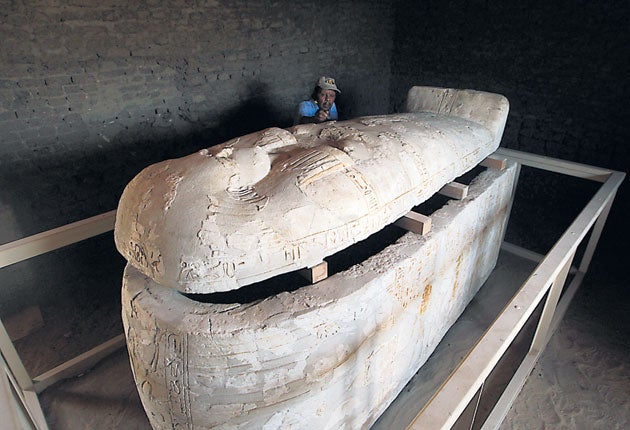Egypt's pyramid selling scheme
The revolution hit tourism, but the fightback is on, says Patrick Cockburn in Cairo

Egypt has opened up the tombs of King Tutankhamun's personal retainers, in a desperate bid to lure back tourists who have fled the country since the revolution in February that overthrew President Hosni Mubarak.
Unemployed guides at Saqqara, south of Cairo – one of the great archaeological sites of the world – are hopeful the publicity surrounding the opening of the seven tombs boosts foreign interest in Egypt's past. They stress that never before have visitors been able to see the tomb of Maya, Tutankhamun's treasurer, or of the young pharaoh's general Horenheb.
But it may some time before fascination with ancient Egypt will be enough to convince tourists to forget television pictures of fighting in Tahrir Square.
At Saqqara, which is dominated by the 4,500-year-old brick step pyramid of Zoser, even the souvenir sellers who used to harass visitors into buying over-priced trinkets, guidebooks and photographs have largely given up trying. Sabri Faraj, the chief inspector of the site overlooking the Nile Valley, said: "We used to get 3,000 visitors a day, but now the number is down about 250." Even the scrawny horses that used to bring visitors in carriages from tomb to tomb have been returned to their stables because there are so few customers.
The collapse is a disaster for Egypt, as few countries are as dependent on money spent by foreign visitors. The numbers visiting Egypt was down by 60 per cent in March, compared to a year ago. Hotels are 80 per cent empty. Walid El-Batouty, the vice president of the guides' union, says that most of his 16,000 members are making no money and are falling into debt. He says that potential visitors to Egypt are frightened of going anywhere in the Middle East or North Africa and associate the whole region with the violence they see on television. He adds: "They imagine that Libya is two feet from Egypt and Syria is a block away. In fact at the start of the revolution one million tourists were evacuated from Egypt over three or four days without a single one them being hurt."
Cairo's Egyptian Museum is largely empty and one can look at the gold sarcophagus of Tutankhamun, or his chariots, walking sticks, gloves, socks and underclothes, without anybody else getting in the way. When I visited the museum, the only large group there was a party of Indian women and a few elderly Americans, Britons and Scandinavians.
In the longer term, Egypt benefits from the world's continued fascination with ancient Egyptian tombs and buildings. And the number of new finds is likely to rise due to a new satellite survey that has identified 17 previously-undiscovered pyramids, several of them at Saqqara. Infra-red imaging showing the remains of buildings just under the ground has led to a further 1,000 tombs and 3,000 settlements.
Join our commenting forum
Join thought-provoking conversations, follow other Independent readers and see their replies
Comments